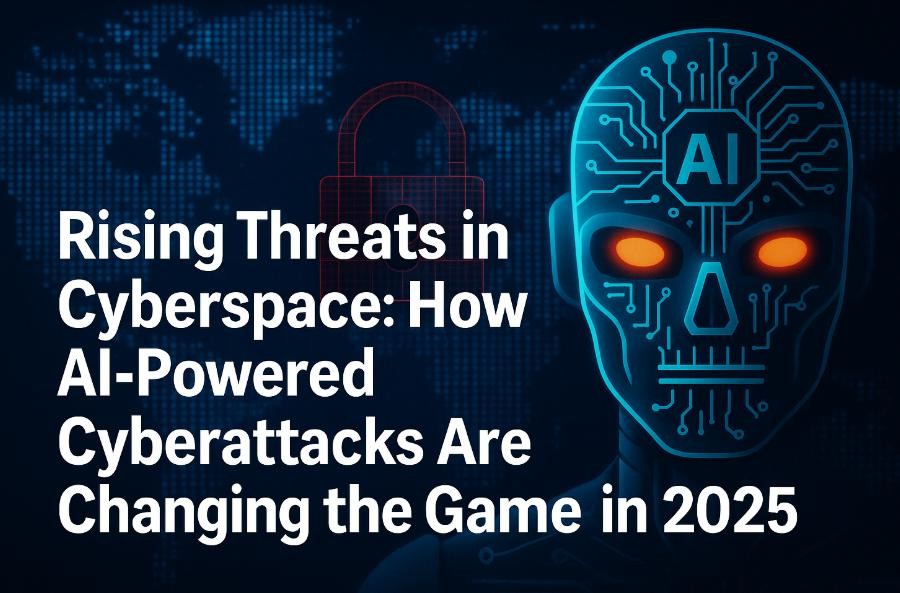As we reach mid-2025, the cyber threat landscape has undergone a dramatic transformation. Today, artificial intelligence—once predominantly seen as a force for defense—is now the most potent weapon in the hands of cybercriminals. AI-powered cyberattacks are scaling in frequency, sophistication, and scope, disrupting individuals, industries, and even national security on a global stage.
Automation&Scale: 36,000ScansaSecond
Fortinet’s 2025 Global Threat Landscape Report reveals a staggering16.7% year-on-year increasein automated scanning, now reaching approximately 36,000 scans per second—a reflection of just how powerful AI-driven automation has become. In addition, a 500% surge in compromised-system logs—amounting to1.7billion stolen credentials—is fueling a 42% spike in credential-based attacks
SophisticatedSocialEngineering&Deepfakes
Phishing—thecyberattackthatoncereliedonhumanerror—isnowamplifiedbyAI.Deepfake audioandvideoarebeingusedinhyper-realisticscams.TheUnitedKingdom’sNCSCandthe
U.S. NIST identify this as a top security threat. In APAC, as well as in India, the use of AIin spear-phishing has surged, successfully mimicking voices and emails from trusted sources.
AnAustraliantax-scamcasehighlightsa300%year-over-yearspikeinAI-generatedphishing, wherescammerscombinedeepfakevoices,personalizedSMS,andbogushelpdeskstoextract data.
FinancialIndustryUnderSiege
ArecentAccenturepollfoundthat80%ofbankcybersecurityexecutivesadmittheycan’tkeep pace with AI-powered attacks, despite spending hundreds of millions on defense.Daily AI- powered attacks are now anticipated by 93% of security leaders, with phishing, ransomware, DDoS, and APTs all becoming AI-enhanced threats.
CriticalInfrastructureatRisk
State-sponsored and criminal actors are now using AI to target national infrastructure. Trustwave warns of AI-driven ransomware and disruptions in sectors like energy, water, transport, and healthcare. Cyber-warfare is also evolving—for example, Iran–Israel tensions have produced a700% surge in Iranian cyberattacks, including DDoS and disinformation campaigns.
The UN has also sounded the alarm: terrorists could repurpose AI-enabled vehicles, drones, and city systems into autonomous weapons. A major international report recommends urgent action to prevent “slaughterbot”-style scenarios within the next 5–10 years.
LLM-BasedAutonomousAttackAgents
Cutting-edge academic research points to LLM-based systems (dubbed “Cyber Agents”) that can autonomously scout networks, craft exploits, coordinate multi-stage attacks, and operate with minimal human oversight. This marks an evolutionary leap in AI weaponization .
Defensive AI&Regulatory Response
It isn’t all bleak. Tech giants are fighting back. Google, for example, has launched enhancementstoSafeBrowsingusingitsGeminiAImodeltocombatphishing scamscrashbytes.com.InIndia,Google’sSafetyCharteraimstopreventover₹20,000crorein losses (roughly USD2.4 billion) from UPI fraud through AI-enhanced defenses
AI has become adouble-edged swordin cybersecurity—powering both defense and offense with equal intensity. As cybercriminals deploy autonomous agents, deepfake phishing, and infrastructure-targetingmalware,defendersmustmatchtheirspeedandscalewithvigilantAI- backed monitoring, advanced architectures, and strong regulation. In 2025, the key to safeguardingcyberspacelies not in ignoring thesedangers,but in harnessing AI’spotential to build resilient, adaptive defenses—and ensuring no one is left behind.
Dr. Sukhpreet Singh Assistant Professor Chandigarh University
